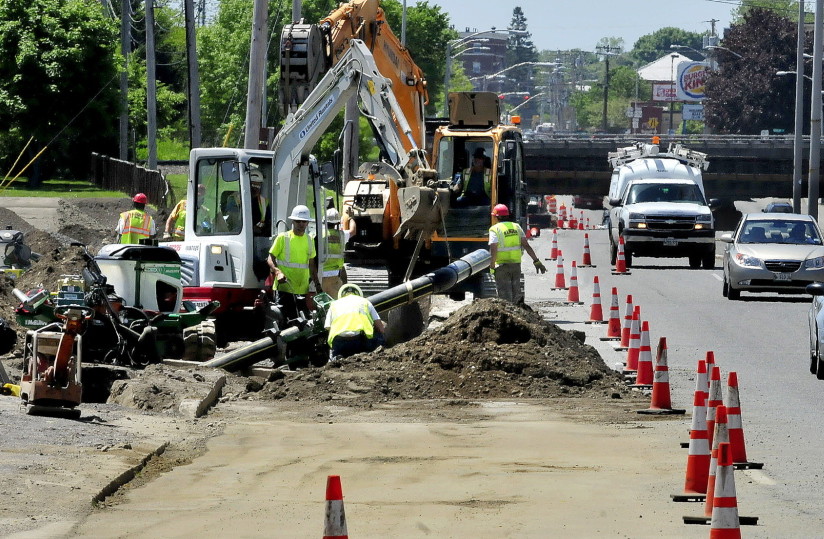The natural gas pipeline expansion now under consideration by the state Public Utilities Commission could relieve a bottleneck that spikes energy prices during winter cold snaps, giving a boost to commercial users. It also could leave ratepayers on the hook for as much as $1.5 billion.
Which way it goes depends on the interplay of a number of complex factors that the state must consider closely before approving such an expensive, and unprecedented, project.
The commission voted 2-1 last week to review three proposals to expand pipeline capacity in New England. To help finance the project, the state would agree to buy up to $75 million worth of natural gas each year, for up to 20 years. Any plan would have to be approved by the PUC and the governor.
Proponents say the public investment would pay for itself in the form of lower heating and electric costs, particularly during the winter, when high demand causes spikes in the price of electricity produced by gas-fired plants.
But if demand for natural gas is slack, and the state can’t find a private buyer for the gas it already has paid for, businesses and residents would see an uptick in their monthly electric bills.
Increased domestic production of natural gas has brought prices attractively low in recent years, and Maine’s struggling paper mills have offered compelling testimony on the need to lower electricity costs through natural gas expansion.
But energy prices can change quickly, because of factors far outside the control of Maine officials. Analysts disagree on the future of natural gas prices, but natural gas is being used more and more to generate electricity, particularly as nuclear and coal-fired plants go offline. Natural gas exports are likely to rise, as well, and domestic production will only get more expensive. The upward pressure on price will be considerable.
With that in mind, it’s hard to tell where the market will be in three years – the earliest pipeline capacity expansion could be completed – not to mention in a decade or so, when the state would only be halfway through its potential billion-dollar commitment.
As well, there are indications that the increased capacity will happen, to some degree, regardless of whether the state invests in the expansion. In fact, there are two projects now pending before the Federal Energy Regulatory Commission that could greatly diminish the chances of the state getting a return on its investment.
And a billion-dollar investment in a fossil fuel would hinder Maine’s ability to build a more diverse energy portfolio. For comparison’s sake, the Statoil project that would have placed floating wind turbines off the Maine coast, with a chance of making the state a leader in an emerging technology, was slated to cost ratepayers $200 million over 20 years.
Low-cost natural gas would certainly be beneficial to Maine residents and businesses, and the PUC is right to look more closely at how to get it. But before the state writes a check this large, more questions have to be answered.
Send questions/comments to the editors.



Success. Please wait for the page to reload. If the page does not reload within 5 seconds, please refresh the page.
Enter your email and password to access comments.
Hi, to comment on stories you must . This profile is in addition to your subscription and website login.
Already have a commenting profile? .
Invalid username/password.
Please check your email to confirm and complete your registration.
Only subscribers are eligible to post comments. Please subscribe or login first for digital access. Here’s why.
Use the form below to reset your password. When you've submitted your account email, we will send an email with a reset code.